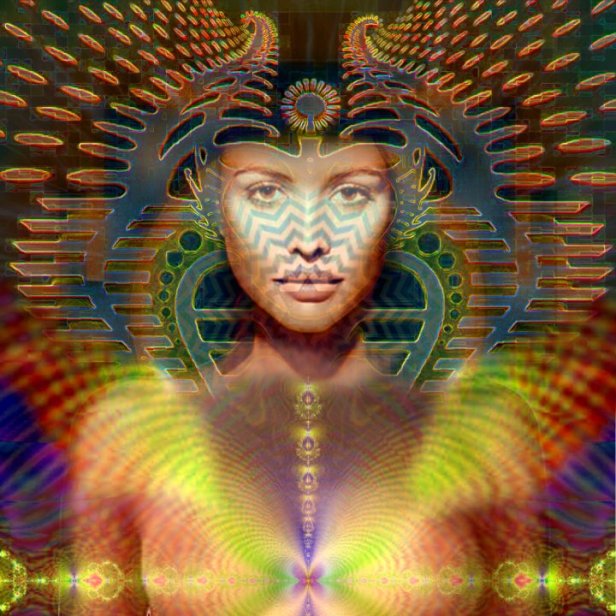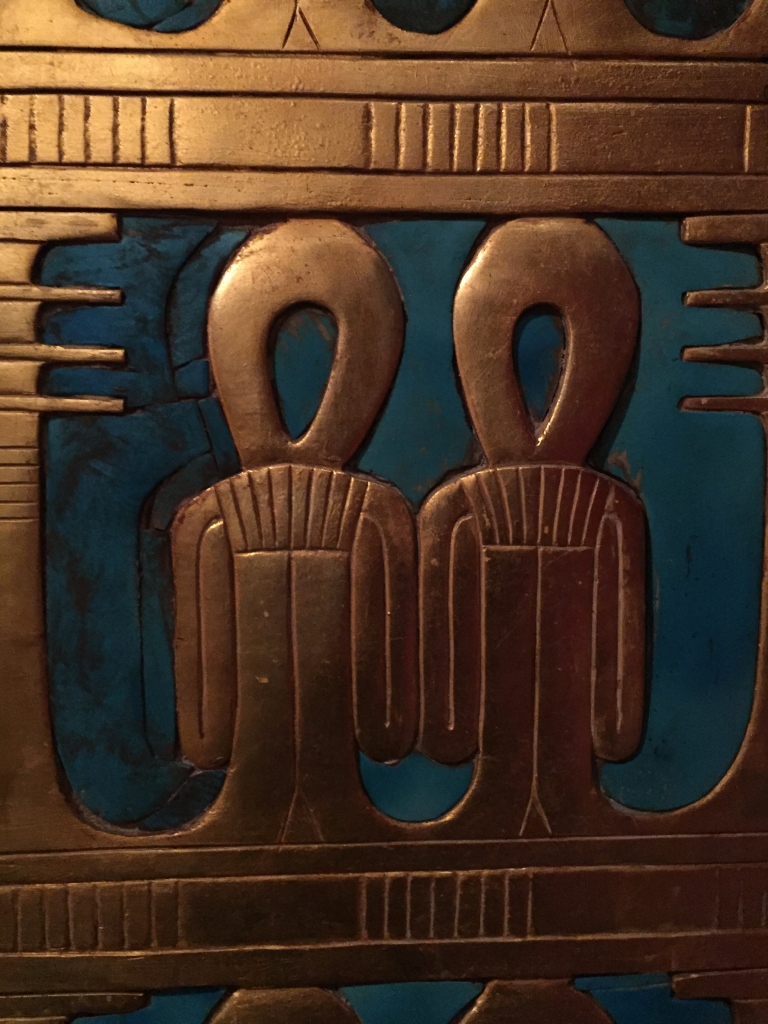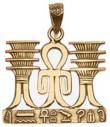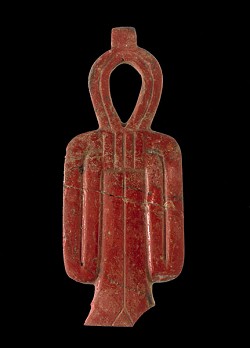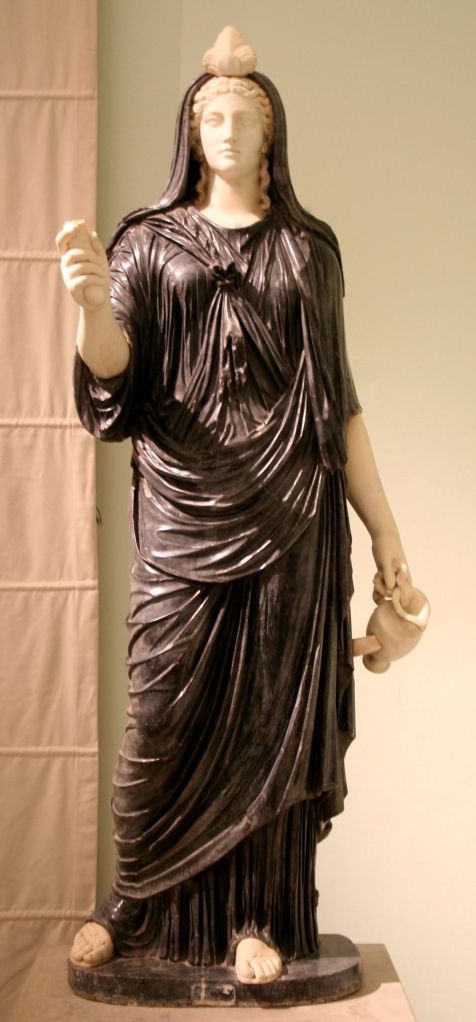This wonderful artwork is by Kaede-chama at Deviant Art. See more work here.
For those of you familiar with the Isis-verse, this is a perennial topic of conversation, discussion, and often, disagreement. There are scholars, as well as practitioners, who come down definitively on the “no” side of the question. They say that once the worship of Isis crossed out of Her native Egypt, it was reinterpreted so much that Isis of Egypt disappeared and became Hellenized Isis, Who was Some Other Goddess.
Yet, I must confess that, with more years of both study and devotion to this particular Goddess under my belt than I sometimes care to admit, I believe that “Iset” and “Isis” are indeed the same Great Goddess.
This, of course, begs several questions. What do I mean by “Goddess?” And what do I mean by “are the same?”
I talk a bit about what I mean by “Goddess” in one of my older posts, which you’ll find here. For me, ultimately, Isis is the Divine. She can express Herself as one among other Divine Beings, as She did in ancient Egypt, or She can show Herself as THE Divine Being, also as She did in ancient Egypt under the epithet Ta Uaet, the Only One (an epithet used of other Egyptian Deities as well). Isis is a flow of conscious Divinity that can dance with other holy currents or subsume them all like a great river. Nonetheless, the current that She is has a particular “flavor” or feeling that is recognizable.
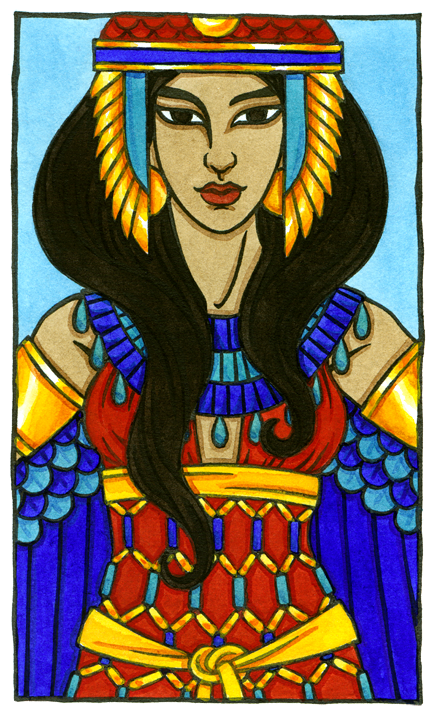
Like I did, you can purchase a print here.
For me, the flavor of Isis tastes of magic and wisdom, power and love. And yes, it has an Egyptian flavor, too. For that is where people first called Her by the name that has never been forgotten from the first time it was spoken to the present day. I am very fond of Her Egyptian-ness; it was one of the things that first drew me to Her. The culture from which She first emerged as a named Deity is an important part of Her and of my attraction to Her.
But if we believe that a Deity can only be of the culture in which She or He was first honored then, to me, we are positing a rather fragmented polytheism as the Divine reality. Certainly, there are practitioners who prefer and find truth in this kind of separation—perhaps especially those who have been to just one too many rituals in which Odin, Isis, Quan Yin, and the Greenman were all invoked together in one great holy mashup. Believe me, I feel you.
But that’s not what happened with Isis in the ancient world. They weren’t trying to reconstruct the worship of Isis or create Neo-Paganism or work out modern polytheism; they were living the worship of Isis as it existed at the time. More than anything else, the people who carried Isis into lands-other-than-Egypt were translating Her for people in other cultures. That’s why we find Isis assimilating so many other local Goddesses (and some Gods). “O, you’ll like Isis. She’s sorta like your Goddess XYZ, and not only that…” This was happening even inside of Egypt itself.
That’s because the ancient Egyptians, at least the learned priesthood, had a more fluid view of the Divine reality. Deities could be “in” each other. Their names could be joined in order to express certain spiritual concepts. One Deity could be the ba, or soul, of another one. Their polytheism was not fragmented, but interconnected. I believe that this underlying interconnection of the Divine influenced later Neoplatonism, which posits an underlying Divine Oneness, even though that unity expresses Itself in many Divine personalities, from Goddesses and Gods to the personal genius or spirit (or ba or ka) of the human being. That’s much closer to where I find myself on the whole structure-of-the-Divine-reality question.
Is is possible that this flowing Divine reality could somehow be stopped by national boundaries? Obviously, my answer is no. The Divine current most certainly can cross any such boundaries. The current Itself doesn’t change. It’s the people responding to that current who provide the variables. People will always respond in ways they are used to from their own culture. Yet our perception isn’t Her reality. The River of Isis is the same river, from the same source, whether it flows through the great halls of Egypt or a shrine on the Greek island of Delos or the temple in my backyard in Portland, Oregon.
So what do I mean by “are the same”?
Just as a great river twists, moving its channel to flow around natural features of the land, so the River of Isis turns as It moves into other cultures. Again, it it still the same river flowing from the same source, but it may look different to the casual observer. Yet if the water were chemically analyzed, there is no doubt that its true source could be detected. The River of Isis always has a little Nile mud in Its deep waters.
Often, when trying to differentiate Iset from Isis, people will point to the different personalities that Iset and Isis supposedly present to worshipers. Iset is fierce, a funerary Goddess, mother of Horus/Pharaoh, and Great of Magic; Isis is a sweet and loving Great Mother Goddess. They also point to Isis’ connection with the moon, which the Egyptian Iset did not have. I explain that here.
Yet if you look more closely at the later traditions associated with Isis, you will find that there is a great deal of continuity with Her earlier Egyptian self. I trace the history of Her worship and point out those resonances throughout Isis Magic. Indeed Isis’ Greek and Roman worshipers were concerned with maintaining Her Egyptian-ness; it was one of the things they liked about Her, too. So let’s take a quick look at some of the correspondences:

Fierceness
In the oldest Egyptian materials, Iset is ruthless in Her quest to ensure that Her son Hor inherits the throne of His father, following Usir’s (Osiris’) death and to ensure the punishment of His usurping uncle Set. She is like a mother lion protecting Her cub. Now here is the sweet Mother Goddess in a much later text from the Greek Magical Papyri:
For Isis raised up a loud cry, and the world was thrown into confusion. She tosses and turns on her holy bed and its bonds and those of the daimon world are smashed to pieces…
These papyri are dated broadly from the 2nd century BCE to the 5th century CE. In other words, they’re pretty late. And She sounds pretty fierce to me. The Greek traveler, Pausanias, writing in the 2nd century CE—at the height of Isis’ popularity in the Mediterranean region—tells several cautionary tales about those who foolishly pry into the Goddess’ Mysteries:
They say that once a profane man, who was not one of those descending into the shrine, when the pyre began to burn, entered the shrine to satisfy his rash inquisitiveness. It is said that everywhere he saw ghosts, and on returning to Tithorea and telling what he had seen he departed this life.
I have heard a similar story from a man of Phoenicia that the Egyptians hold the feast for Isis at a time when they say she is mourning for Osiris. At this time the Nile begins to rise, and it is a saying among many of the natives that what makes the river rise and water their fields is the tears of Isis. At that time then, so said my Phoenician, the Roman governor of Egypt bribed a man to go down into the shrine of Isis in Coptos. The man dispatched into the shrine returned indeed out of it, but after relating what he had seen, he too, so I was told, died immediately. So it appears that Homer’s verse speaks the truth when it says that it bodes no good to man to see godhead face to face.
Pausanias, Book X, Phocus, Ozolian Locri, 32, 10-17
Tithorea was a Greek town with an Isis sanctuary; the Coptos tale is clearly late, from Roman-occupied Egypt. Fierce then. Fierce now; just ask Her priestesses and priests about Isis, the Ass Kicker.
A Funerary Goddess
Isis is strongly associated with the Egyptian funerary and Otherworld tradition from the very beginning. And She most certainly did not lose this important connection, even as She moved into the Greek and Roman worlds. Just as Usir is glad to see Isis when He arrives in the otherworld, so the Roman initiate of the Mysteries of Isis expected to find Her in the afterlife, waiting for him:
…and when you have completed the span of your lifetime, you will pass down to the netherworld, but there also, in the very midst of the subterranean hemisphere, you shall often worship me [Isis] who you now see as one who favors you, shining in the darkness of Acheron and ruling in the Stygian depths, when you the while shall dwell in the Elysian fields.
Apuleius, Metamorphoses, Book XI, chapter 6
Indeed Her Mysteries are an initiation into death; an inoculation so that Her initiates no longer fear, but enter into the mysterious realm of death under Her protection—just as She had always protected Her Egyptian children by wrapping Her great wings about their sarcophagi.
Mother of Hor/Pharoah
The name Iset means “Throne.” Thus the Goddess Iset is the Goddess Throne. She, and just about every Egyptian Deity, was connected with Egyptian royalty in one way or another. (However, I believe the meaning of Iset’s name originally had more to do with sacred place, which is another meaning of “iset,” than it did with its later connection to the kingship.) The non-Egyptian rulers of Egypt—the Greek Ptolemies and, after them, the Romans—did not want to lose this important royal connection, especially since Isis was, in their time, an even more important and universal Goddess. So Isis was one of a handful of Deities Who became personal Ptolemaic matrons and patrons. The last Ptolemy, Kleopatra VII, considered herself an avatar of Isis. The Romans had a somewhat rockier relationship with the Goddess, which I talk a bit about here.
And while it is true that Isis showed a motherly face, even the face of a Savior Goddess, to Her children in the Greek and Roman period, She also retained Her specific identity as the mother of Horus. The images of Isis Lactans, Isis feeding Horus from Her breast with the Holy Child seated (“seat” is another meaning of “iset,” by the way) on Her lap, were extremely common in the Roman period and became one of the models for the images of Mary with Her Holy Child as Christianity took root.
Great of Magic
In ancient Egypt, heka, usually translated as “magic,” is the great Force that underlies all existence. It is the energy that enables life, the universe, and everything to operate. It is the power of Creation. All the Deities have heka, yet Iset and Djehuty, Isis and Thoth, come down to us as Egypt’s greatest Divine magicians. In the Egyptian texts, Iset uses Her magic to resurrect Usir in order to conceive Their child, to create—bringing forth “what Her mind conceived and Her tongue spoke”—to protect in this world and in the beyond, for dream divination and, perhaps most importantly, to heal.
We find Her magic working in all these same areas in later periods, too. Look through the Greek Magical Papyri and there She is. For instance, here is a divinatory working:
Great is the Lady Isis! Copy of a holy book found in the archives of Hermes: the method is that concerning the 29 letters [perhaps of the Coptic alphabet] through which letters Hermes and Isis, who was seeking Osiris, her brother and husband, found him. Call upon Helios and all the gods in the deep concerning those things for which you want to receive an omen. Take 29 leaves of a male date palm and write on each of the leaves the names of the gods. Pray and then pick them up two by two. Read the last remaining leaf and you will find your omen, how things are, and you will be answered clearly.
And a love spell:
The goddess in heaven looked down upon him, and it happened to him according to every wish of his soul… [your name] says: From the day and the hour I, [your name], do this act to you; you will love me, be fond of me, and value me [until] I die. O Lady, goddess Isis … carry out for me this perfect charm.
And a healing formula for curing an infection from a dog bite:
To be said to the bite of a dog: “My mouth being full of blood of a black dog, I spitting out the redness of a dog, I come forth from Alkhah. O this dog who is among the ten dogs which belong to Anubis, the son of his body, extract your venom, remove your saliva from me also! If you do not extract your venom and remove your saliva, I shall take you up to the forecourt of the temple of Osiris, my watchtower. I will do for you … according to the voice of Isis, the magician, the lady of magic, who bewitches everything, who is never bewitched in her name of Isis, the magician.”
Even as late as the Greek Magical Papyri, Isis the Magician, Isis the Great of Magic, is the Goddess Who “bewitches everything,” yet is never Herself compromised.
The Nile River at night
The River of Isis Flows
These examples are enough to demonstrate the continuity of the Divine current that has always existed, and which, all those thousands of years ago, came to be called by the name of Iset, Isis, Eisis, Iside. It is the same current, issuing from the same source from which it has always flowed. We can still taste the Nile mud in the water. A Deity’s worshipers will always contribute to the form that Deity takes; I discuss one of the most obvious manifestations of that phenomenon here. Yet we don’t create that image out of whole cloth. The feeling, the taste, the essence of the Deity always forms the core of our experience. The River of Isis is eternally flowing; what we human beings build along its banks is what changes with the times.







